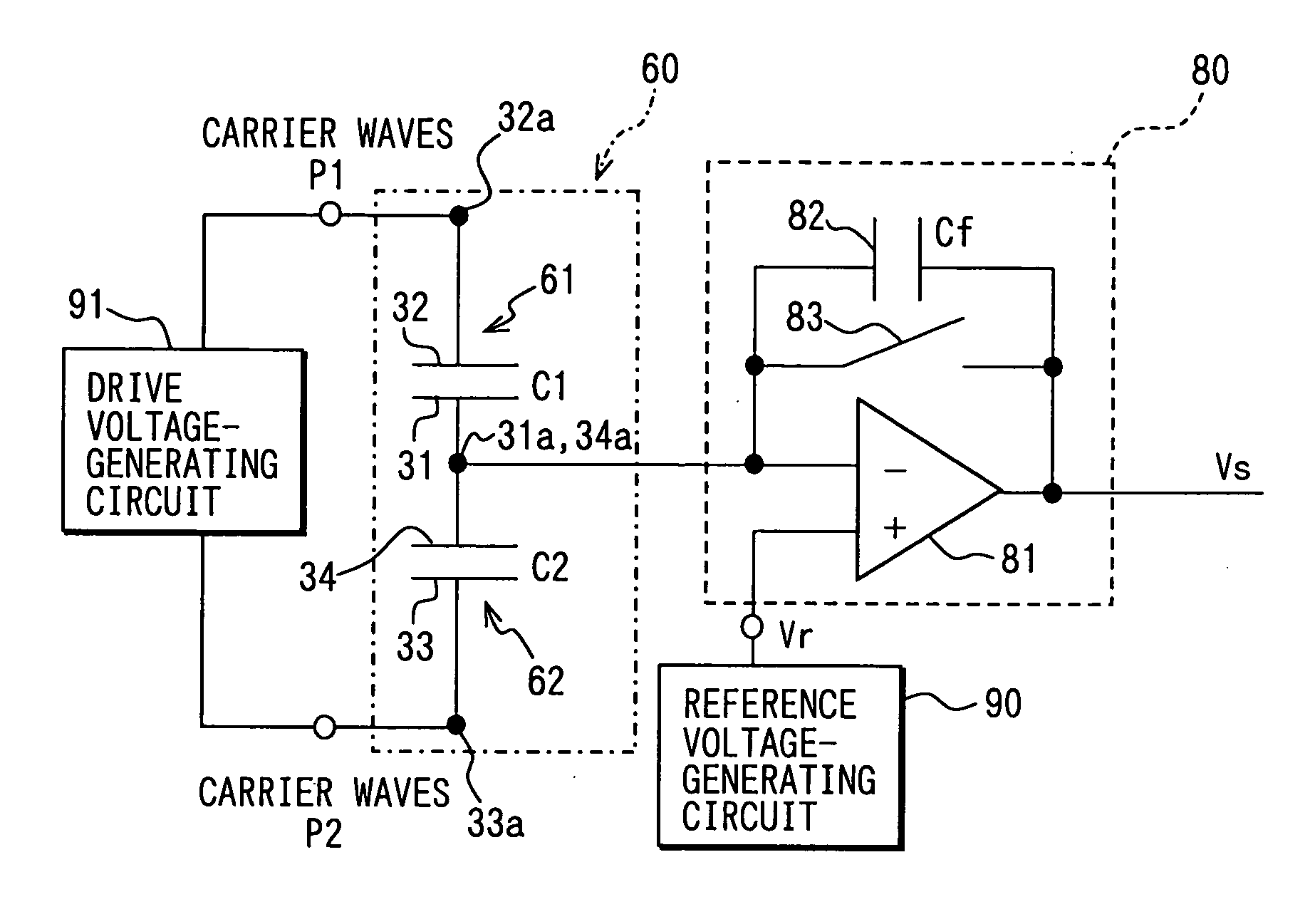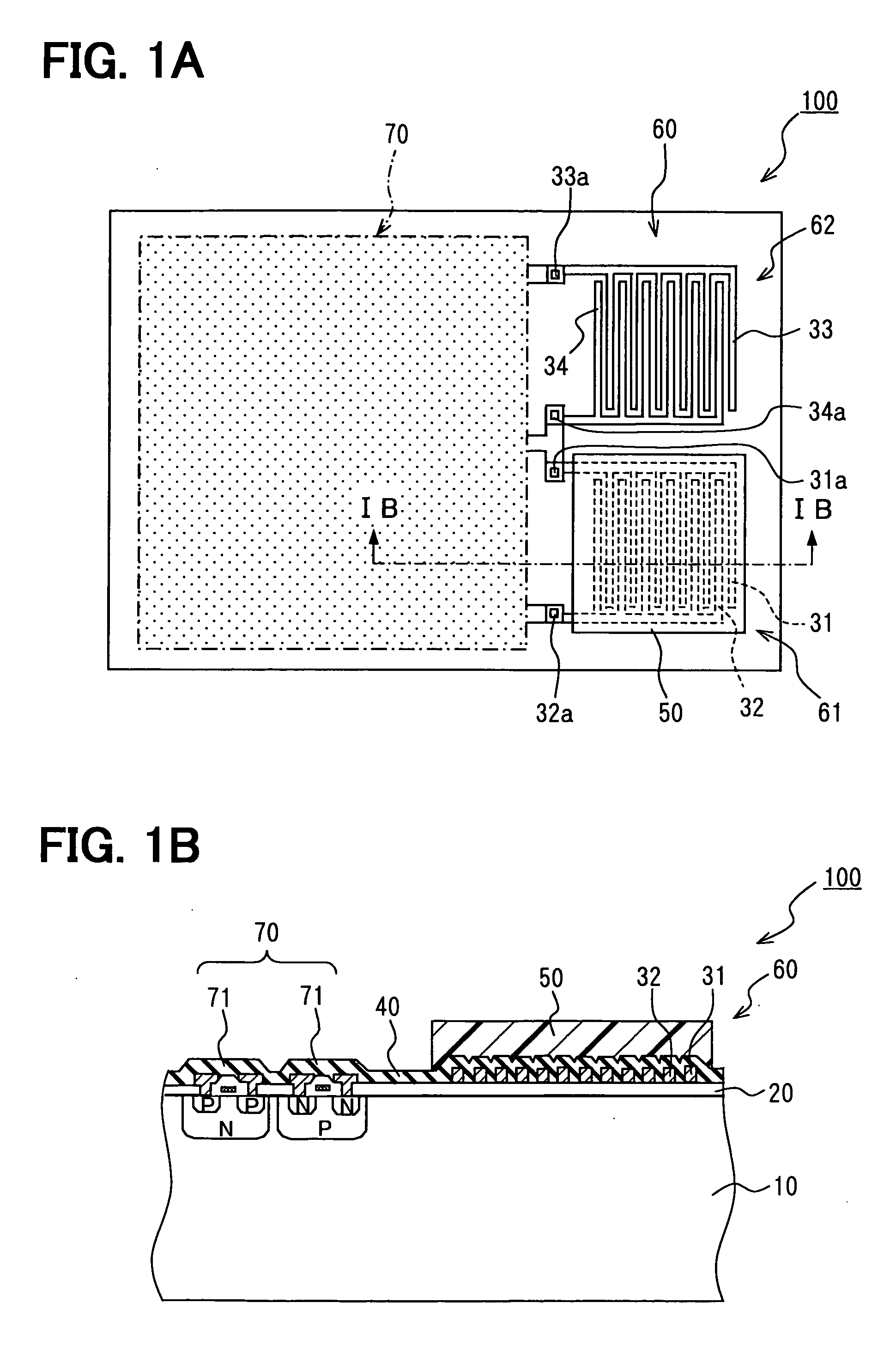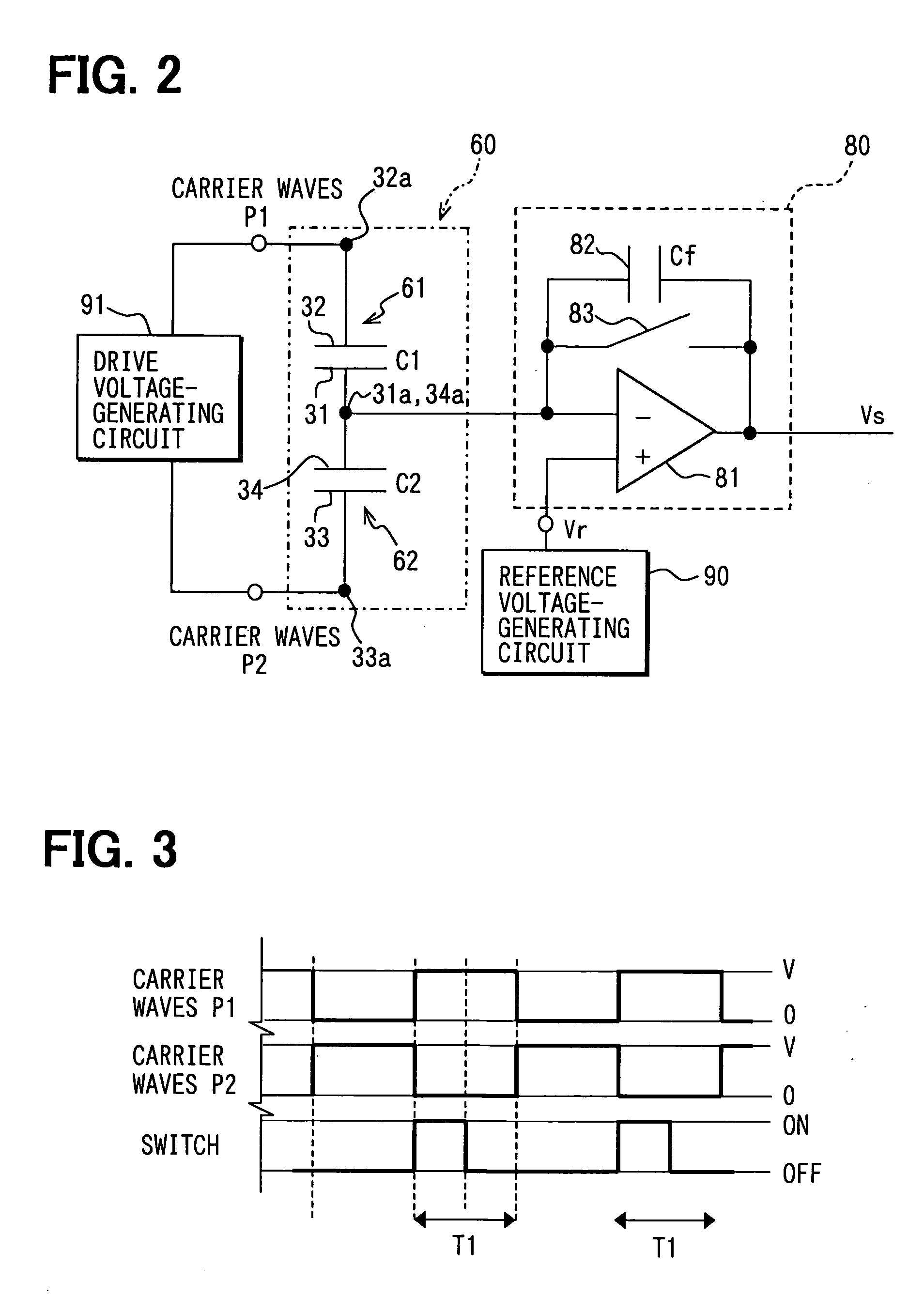Capacitance type physical quantity detector
a technology of capacitive type and detector, applied in the direction of resistance/reactance/impedence, instruments, mechanical means, etc., can solve the problems of increasing the chip area boosting up the cost,
- Summary
- Abstract
- Description
- Claims
- Application Information
AI Technical Summary
Benefits of technology
Problems solved by technology
Method used
Image
Examples
first embodiment
[0036]FIG. 1 is a view schematically illustrating the constitution of a capacitance type humidity sensor according to this embodiment, wherein FIG. 1A is a plan view and FIG. 1B is a sectional view along the section IB-IB in FIG. 1A. In FIG. 1A illustrating the sensor unit, the electrodes and wiring are partly illustrated in a see-through manner, and the circuit portion is omitted.
[0037] In FIG. 1B, reference numeral 10 denotes a semiconductor substrate which in this embodiment is made of silicon. A silicon oxide film 20 is formed as an insulating film on the upper surface of the semiconductor substrate 10. Further, a pair of detecting electrodes 31 and 32 are arranged on the same plane on the silicon oxide film 20 facing each other and being spaced apart.
[0038] There is no particular limitation on the shape of the detecting electrodes 31 and 32. In this embodiment, however, the detecting electrodes 31 and 32 are formed in the shape of comb teeth as shown in FIG. 1A. Employment of...
second embodiment
[0062] Next, a second embodiment will be described with reference to FIGS. 8 and 9. FIG. 8 is a diagram illustrating the temperature characteristics of the reference voltage for correcting the temperature characteristics of the sensor unit 60 shown in FIG. 4, and FIG. 9 is a diagram illustrating the constitution of the reference voltage-generating circuit 90 for imparting predetermined temperature characteristics to the reference voltage Vr.
[0063] The capacitance type humidity sensor 100 of the second embodiment is largely common to that of the first embodiment. Therefore, common portions are not described in detail but different portions are described in detail.
[0064] The second embodiment is different from the first embodiment with respect to that the temperature characteristics of the sensor unit 60 are corrected by the reference voltage Vr.
[0065] In this embodiment, the temperature characteristics of the sensor unit 60 are corrected by the reference voltage Vr applied to the ...
third embodiment
[0069] Next, a third embodiment will be described with reference to sectional views of FIGS. 10 and 11 illustrating the capacitance type humidity sensor 10. FIG. 10 is a diagram illustrating the temperature characteristics of the drive voltage for correcting the temperature characteristics of the sensor unit 60 shown in FIG. 4, and FIG. 11 is a diagram illustrating the constitution of a drive voltage-generating circuit 91 for imparting predetermined temperature characteristics to the drive voltage V.
[0070] The capacitance type humidity sensor 100 of the third embodiment is largely common to that of the first embodiment. Therefore, common portions are not described in detail but different portions are described in detail.
[0071] The third embodiment is different from the first embodiment with respect to that the temperature characteristics of the sensor unit 60 are corrected by the drive voltage V.
[0072] In this embodiment, the temperature characteristics of the sensor unit 60 are ...
PUM
| Property | Measurement | Unit |
|---|---|---|
| RH | aaaaa | aaaaa |
| temperature | aaaaa | aaaaa |
| capacitance | aaaaa | aaaaa |
Abstract
Description
Claims
Application Information
 Login to View More
Login to View More - R&D
- Intellectual Property
- Life Sciences
- Materials
- Tech Scout
- Unparalleled Data Quality
- Higher Quality Content
- 60% Fewer Hallucinations
Browse by: Latest US Patents, China's latest patents, Technical Efficacy Thesaurus, Application Domain, Technology Topic, Popular Technical Reports.
© 2025 PatSnap. All rights reserved.Legal|Privacy policy|Modern Slavery Act Transparency Statement|Sitemap|About US| Contact US: help@patsnap.com



